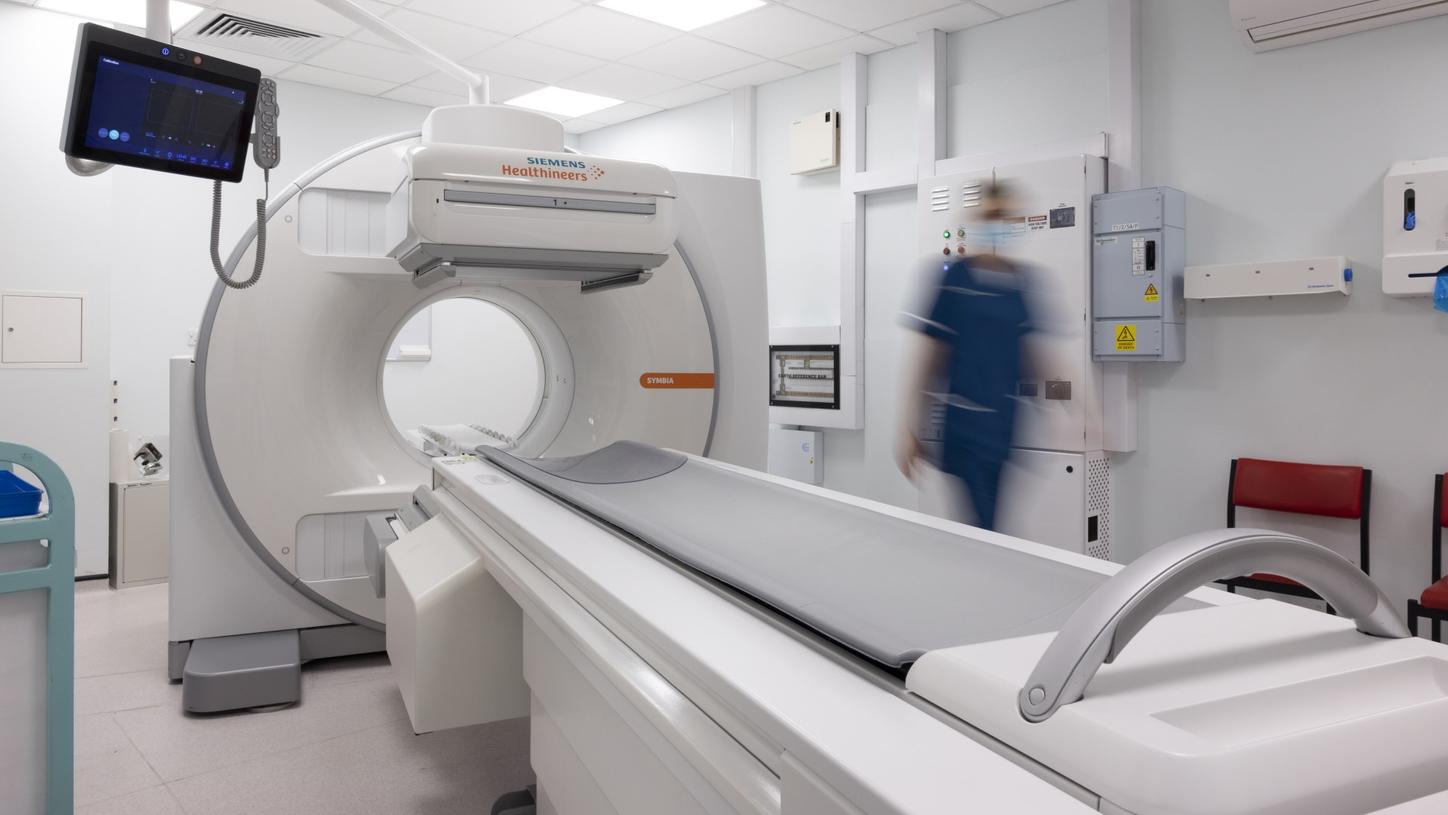Nuclear medicine experts on two continents describe how the new fully integrated SPECT/CT serves more patients and signals the beginning of a new era in nuclear imaging.
Photography by Jonathan Browning and Scott van Osdol
Single-photon emission computed tomography (SPECT) combined with computed tomography (CT) was introduced as a hybrid SPECT/CT imaging modality almost two decades ago. Soon after the first commercially available diagnostic SPECT/CT system, Siemens’ Symbia TruePoint™ system, was launched in 2004, researchers recognized the potential for improving image quality and incorporating quantitative image acquisition and reconstruction.
Alexander Hans Vija, PhD, who has been working
in the field for more than 25 years
and is currently head of SPECT
research at Siemens Healthineers
Molecular Imaging in Hoffman
Estates, Illinois, USA, recalls that
collaborative research led to Symbia
Intevo™, which featured standardized
quantification and the high-resolution
xSPECT Bone™ reconstruction
algorithm. “But from here, we wanted
to have a more integrated solution
and ultimately enable many more
imaging departments to install a
SPECT/CT system.” This would allow
more patients to access a wider range
of services.
"I believe this system moves the bar to a level where everybody can enter the SPECT/CT world."
Transitioning from SPECT to SPECT/CT
Vija’s hopes for Symbia Pro.specta have been realized at Baylor Scott & White (BSW) Medical Center-Temple in central Texas (USA), a part of the BSW Health, one of the largest not-for-profit healthcare systems in the US. “We had been wanting a SPECT/CT camera for many years,” admits Michael L. Middleton, MD, director of the nuclear radiology division which employs three nuclear physicians and six technologists. Obtaining approval for purchase of a SPECT/CT system was challenging, however, due to reimbursement issues. “Approval of parathyroid SPECT/CT opened the door,” he recalls, but even then, installation of a SPECT/CT system was delayed for years. “We were left with just two Symbia™ SPECT-only cameras. We desperately needed a third nuclear medicine camera just to keep up with demand. So, Symbia Pro.specta was a godsend,” he says. The center has now been working with the new system for one year, and it has been providing more capabilities to a much wider variety of patients.
Expanded clinical applications
“The Symbia Pro.specta system has
been most useful for parathyroid
imaging, which we do once or twice
a day,” Middleton notes. “We also
schedule our larger (BMI >35) cardiac
patients on the camera because it
improves attenuation correction on
the myocardial perfusion scans in
these patients who have issues due
to soft tissue, large breasts, and fat.”
Women with breast cancer who have
had axillary breast surgery and cannot
raise their arms, causing attenuation, are also being moved to the Symbia
Pro.specta system. Additionally, it is
being used for octreotide scans where
patients do not have access to PET, for
MIBG scans, and imaging of 99mTc
MAA particles and bremsstrahlung
SPECT/CT for post-therapy imaging of
90Y microsphere selective internal
radiation therapy (SIRT) of liver
cancer. Another advantage of the new
camera and software is the improved
visualization of lesions compared with
planar imaging or SPECT alone, the
BSW professionals add. “With Symbia
Pro.specta, we have been able to start
using the xSPECT Bone reconstruction
algorithm, which helps us better
localize and characterize bone
disease,” Middleton says.
Another noticeable effect after upgrading to SPECT/CT was the intelligent imaging experience that fully integrates SPECT and CT. Middleton noticed how the staff appreciates the automation of the workflow. “It reduces the time going from the control room to the camera room. They can basically run it from the control room.” For lead nuclear medicine technologist Stephen Stoner, a big advantage of Symbia Pro.specta is streamlined design. “We don’t have all the big computers that we used to have. That gives us more space within the control room itself,” he says. “You just have the monitors and the keyboard on top of the table, with no big computer box underneath.”
“With Symbia Pro.specta, we have been able to start using the xSPECT Bone reconstruction algorithm, which helps us better localize and characterize bone disease.”
Middleton adds, “Any site acquiring one of these SPECT/CT cameras needs to schedule extra training time for the technologists to learn the new SPECT syngo® software platform. But then I think they will be happy with it.” Middleton’s team switched the software they used to read the scans to syngo.via. “It wasn’t a hard transition, and it’s been an improvement, especially on the cardiac reading,” he comments. “Overall, it’s been a positive learning curve.”
Reaching more patients through expanded use of Symbia Pro.specta SPECT/CT
The USA medical facilities are looking forward to expanding their services with Symbia Pro.specta. “Our dream would be to get up and running with contrast-enhanced CT, for follow-up prostate or bone scans, and be able to go one-stop shop with that. That is our aim for next year,” Ross says.
The positive experience of the
US hospital with the new
Symbia Pro.specta reflects the
culmination of Vija’s vision of
wider availability and easier use,
but also demonstrates the potential
for both nuclear medicine
departments to expand their patient
services even beyond those they
envisaged when they first started
using the Symbia Pro.specta.
About the author
Linda Brookes is a freelance medical writer and editor. She divides her time between London and New York, working for a variety of clients in the healthcare and pharmaceutical fields.





